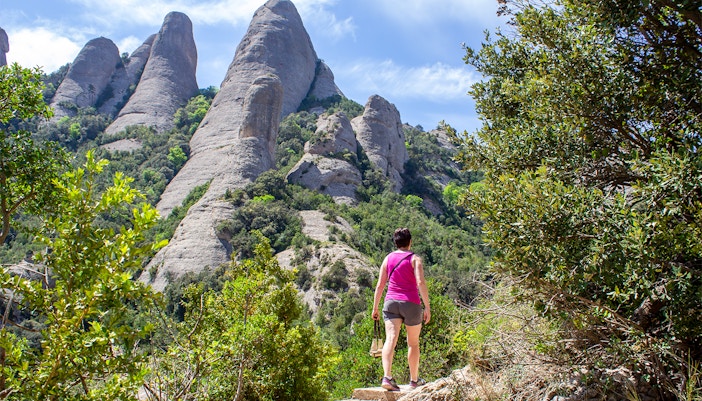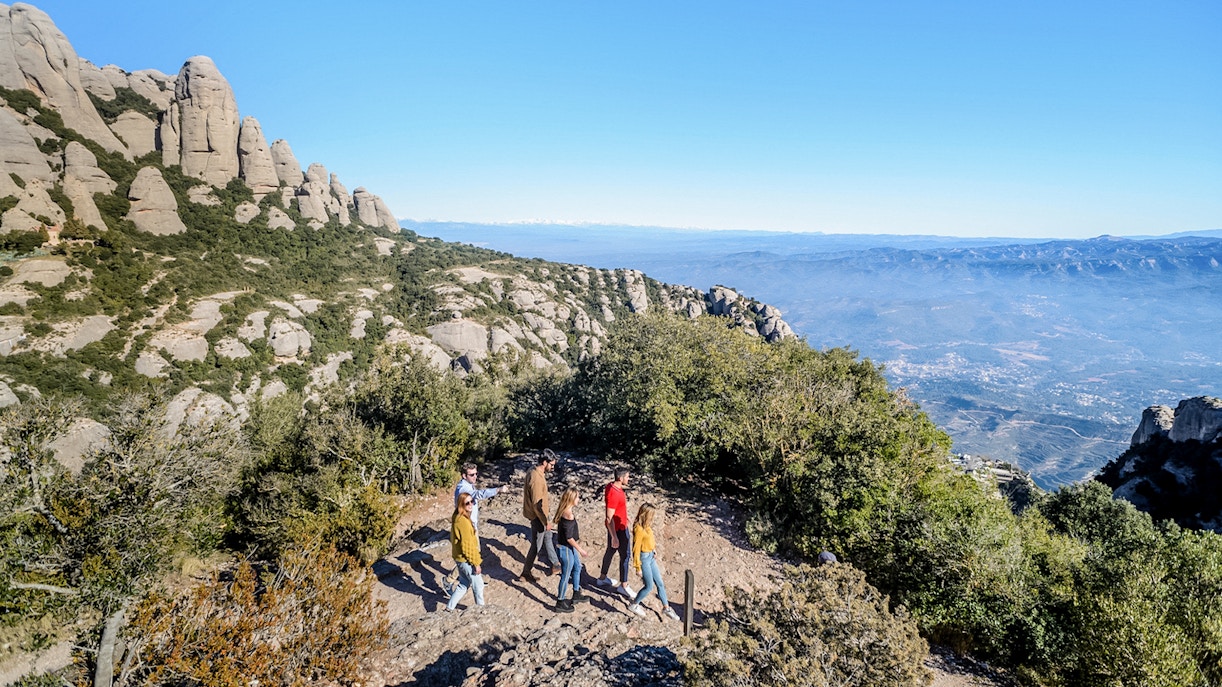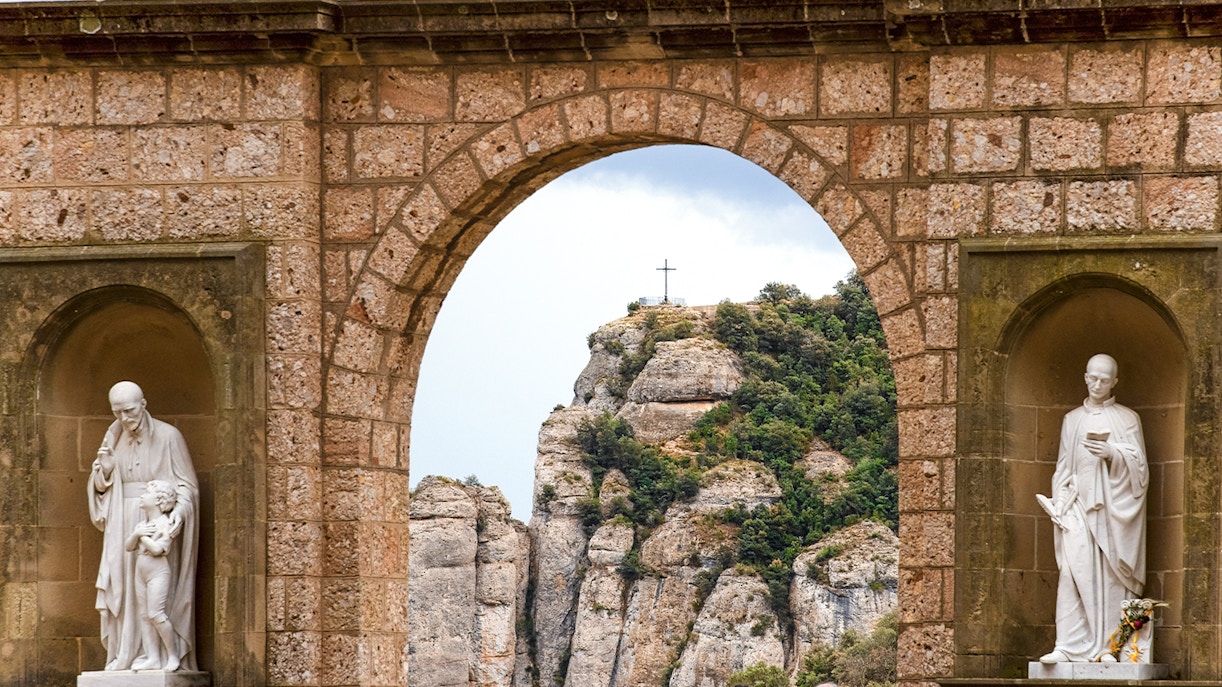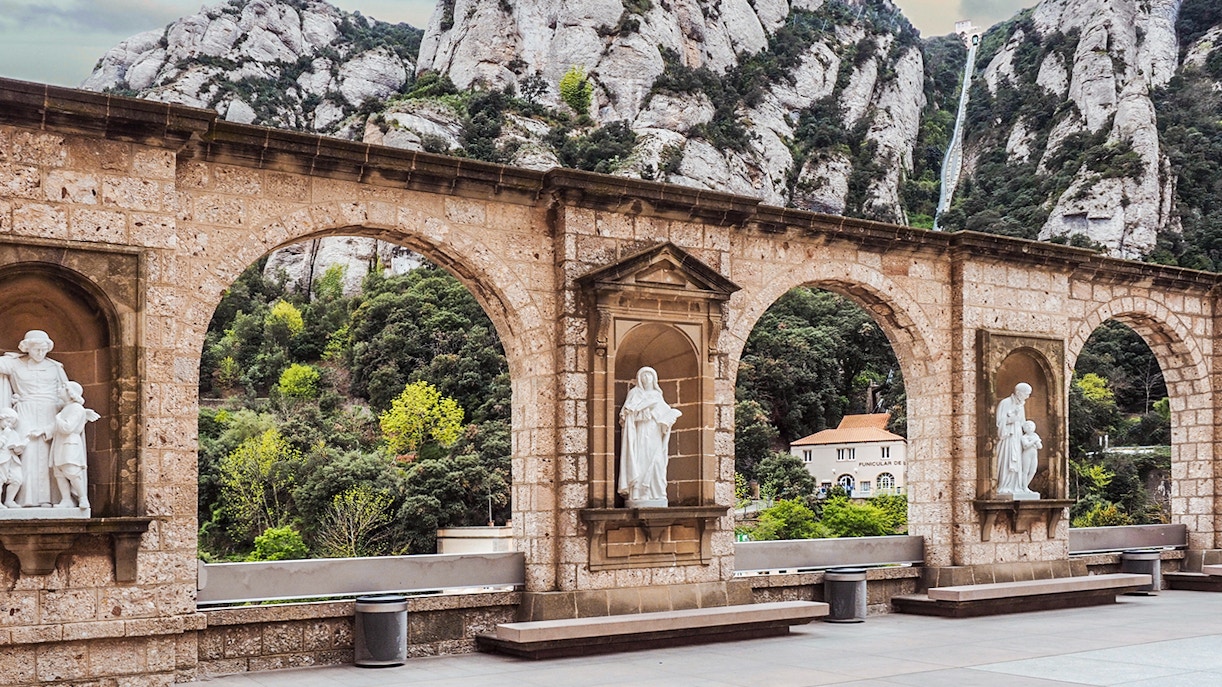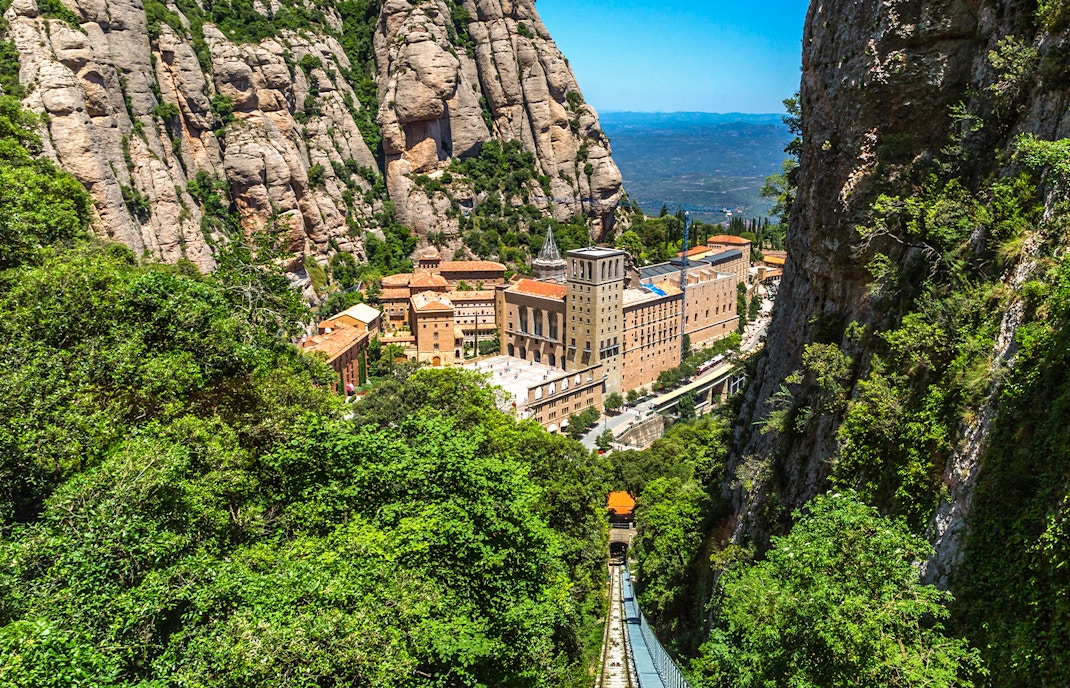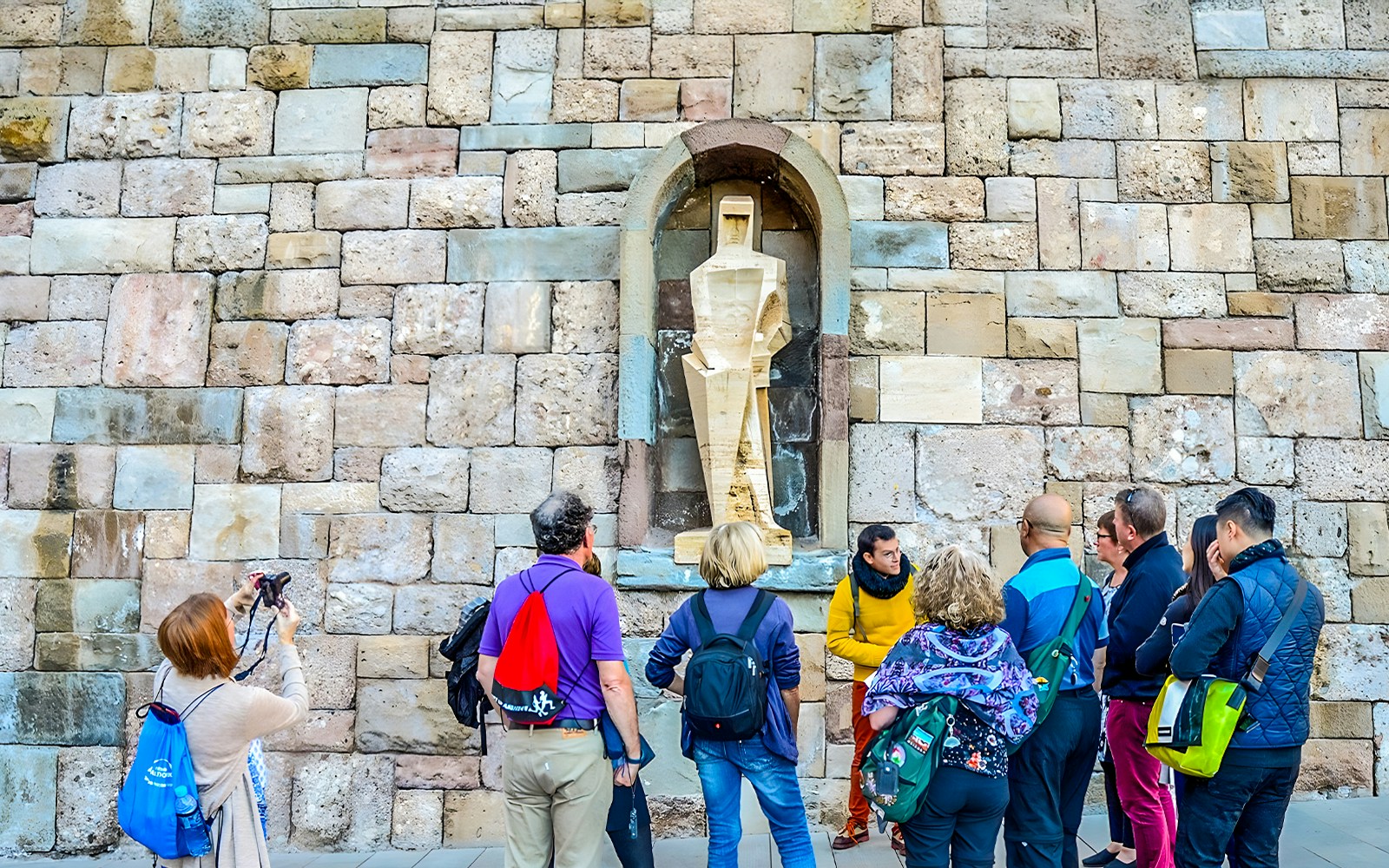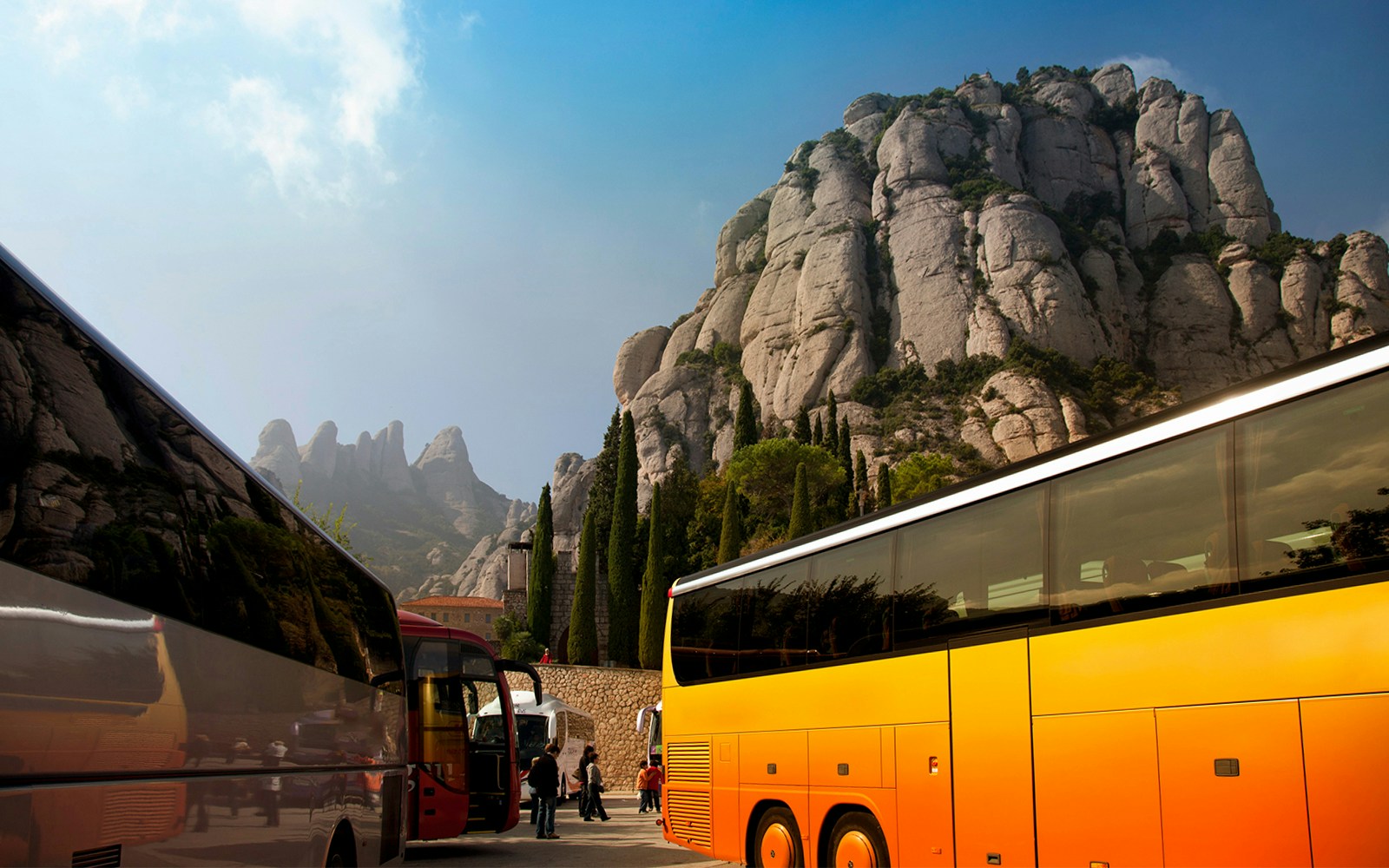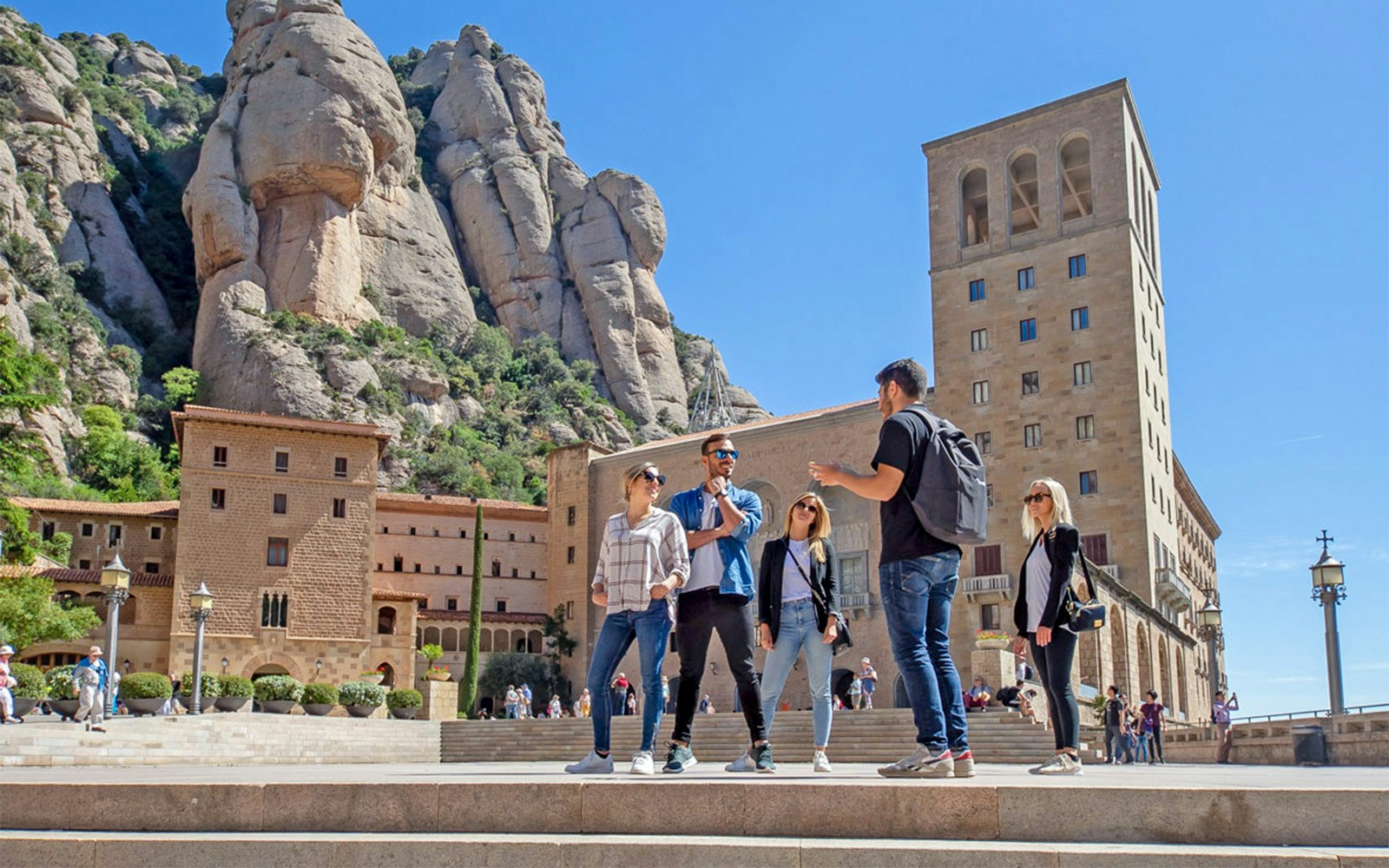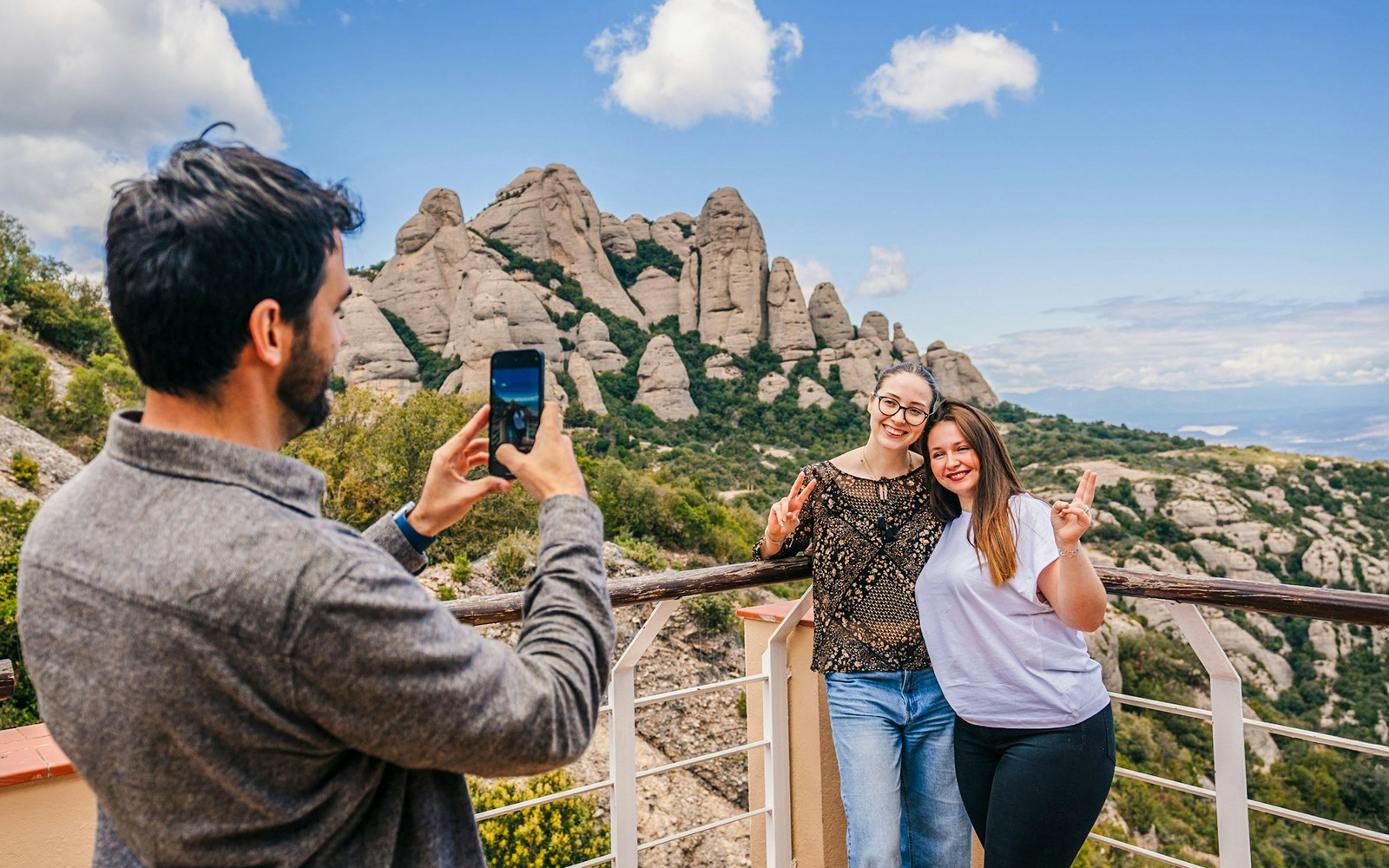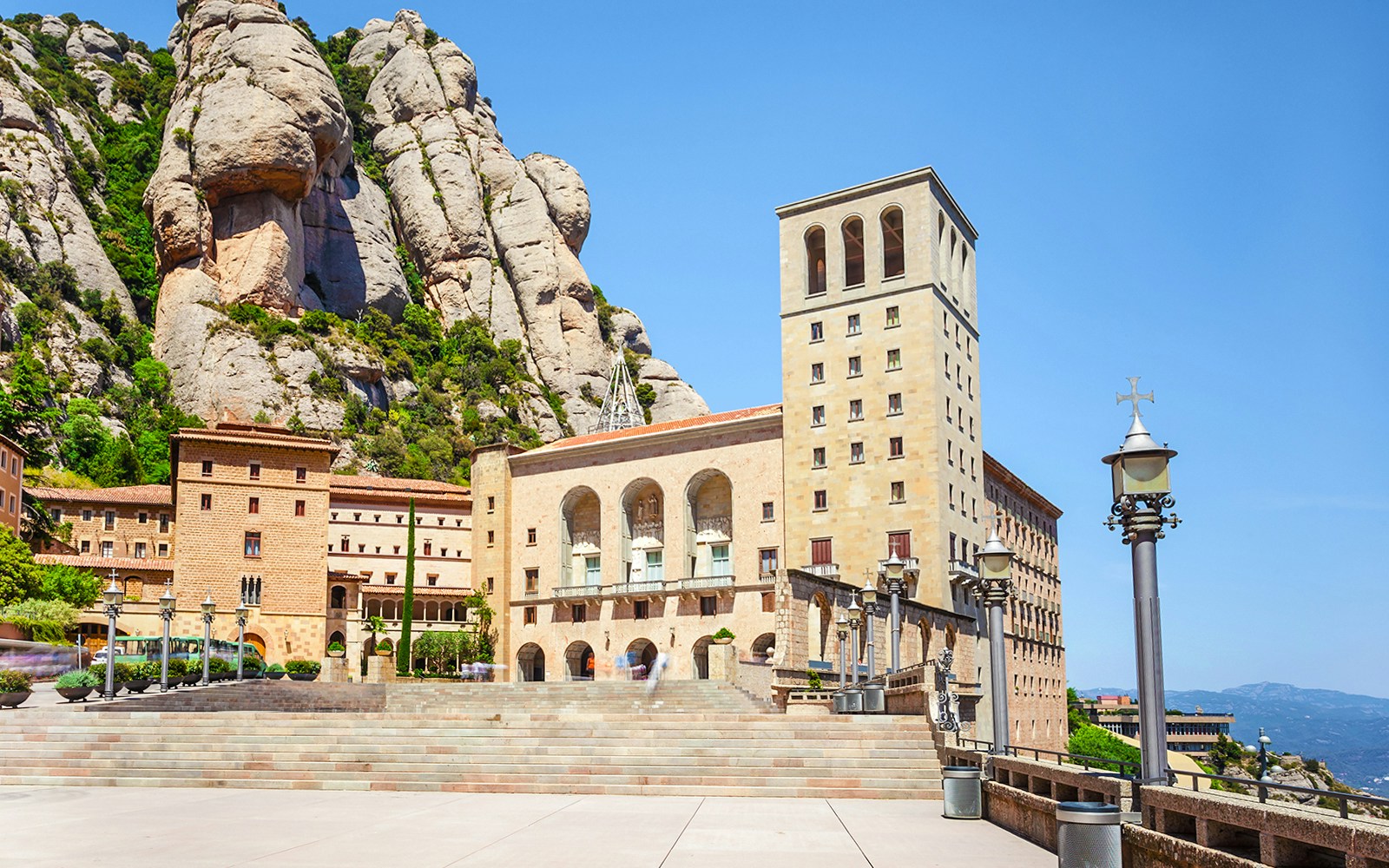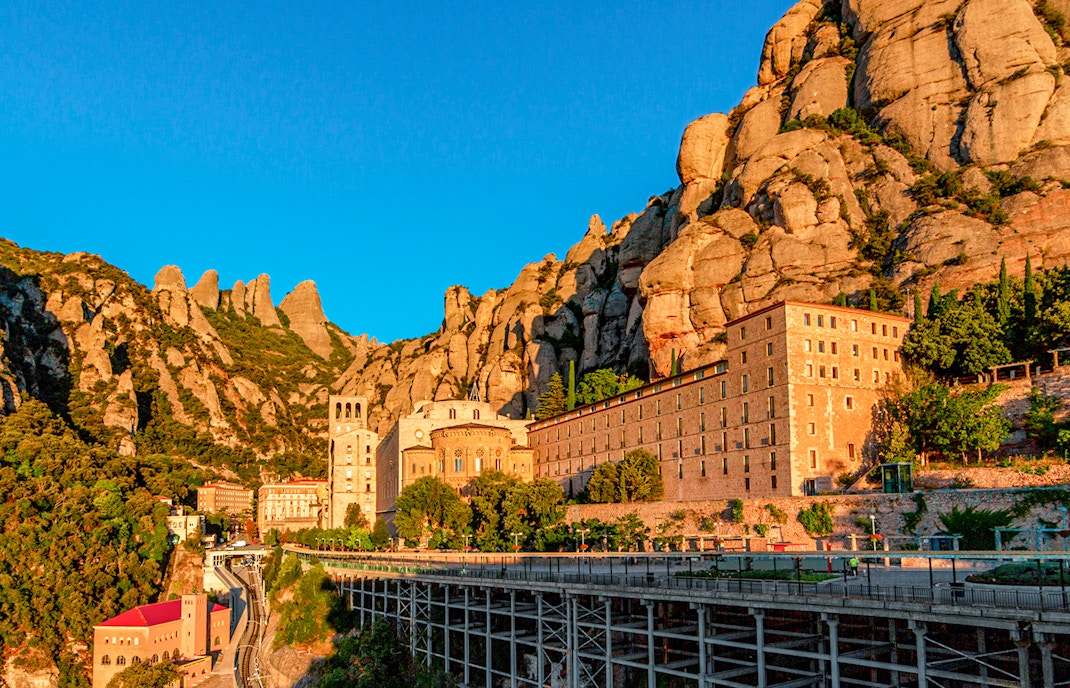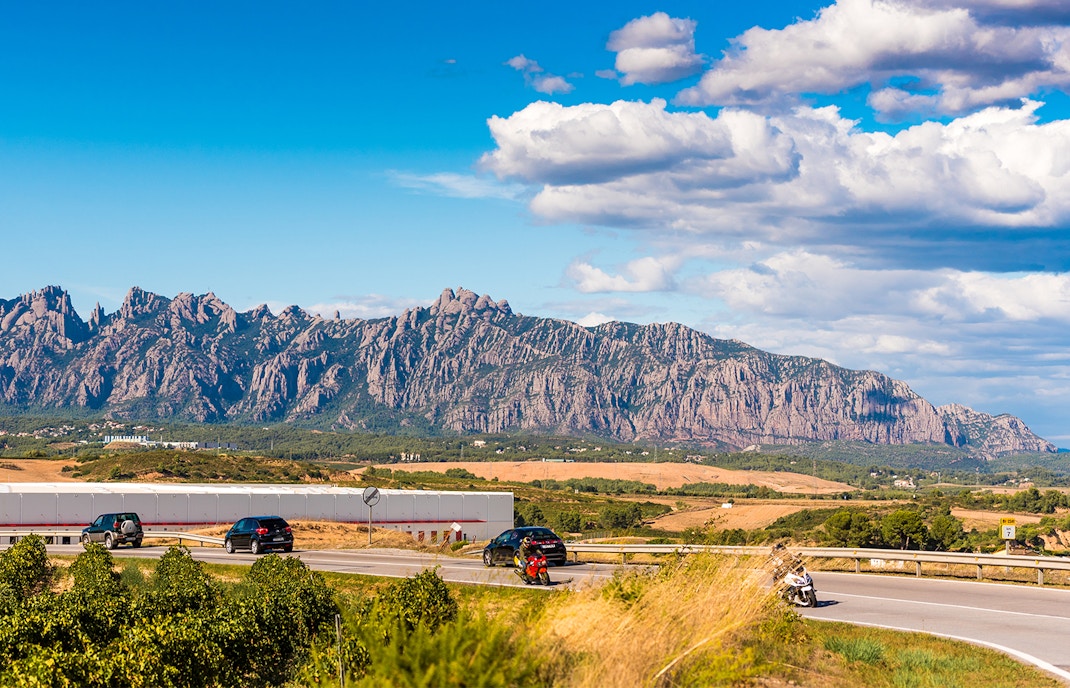- Step 1: Take the R5 train from Plaça d’Espanya to Montserrat-Aeri station.
- Step 2: Board the Cable Car (Aeri de Montserrat)
- Duration: 5-minute ride offering spectacular mountain views.
- Tip: Do not get off at Olesa de Montserrat. Although it has a cable car, it does not go to Montserrat Monastery. This route is the fastest and most scenic way to reach Montserrat.
Getting to Montserrat from Barcelona by train
Your journey typically starts in Barcelona at Plaça d’Espanya, where you will take the R5 train towards Manresa. You can choose between the Cable Car (Aeri de Montserrat), the Rack Railway (Cremallera de Montserrat), or even hiking.
- Departure Station: Plaça d’Espanya, accessible via Barcelona Metro (Green L3 & Red L1 lines).
- Train Line: R5 train to Manresa, running approximately every hour.
Important: Before purchasing your ticket, you must choose between the Cable Car (Aeri de Montserrat) or Rack Railway (Cremallera de Montserrat) since the train stops at different stations for each option. Once you reach Montserrat you have these options to reach the top.

By Train + Cable Car (Aeri de Montserrat)

By Train + Rack Railway (Cogwheel)
